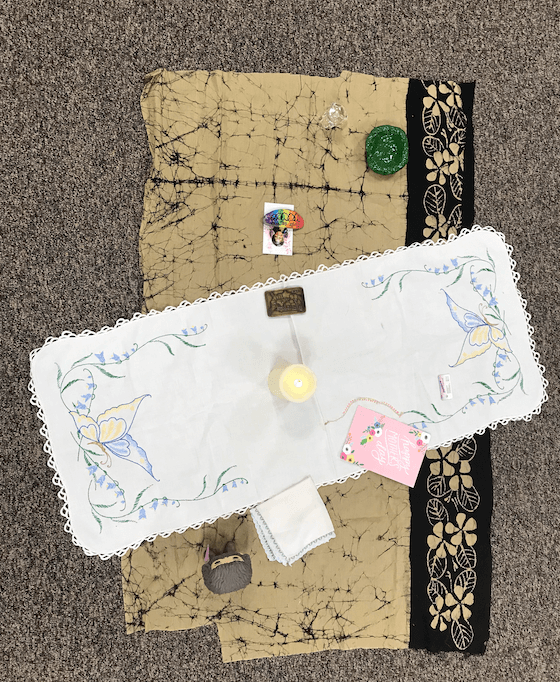What is a Talking Circle and How Can it be “Restorative?”
Restorative justice is often associated with various processes and practices, including victim-offender dialogues and circle processes. The talking circle is often used in restorative processes for re-entry circles, but it also has other applications, including family group decision-making, community-building circles in schools, and sentencing circles. In a talking circle, a keeper of the circle convenes the parties after a suitable preparation period. They share the topic for the circle. The keeper of the circle provides a talking piece that is circulated clockwise to those in the circle. The holder of the talking piece can talk or pass, but only the person with the talking piece may speak.
This is a centerpiece, developed for a circle during a project I worked on with WWRC in Fishersville, Virginia. Each participant contributed an item to the circle that was special to them.
This process became associated with restorative justice when Judge Barry Stuart, a judge in the Canadian Yukon Territory, was preparing to sentence a repeat offender. Frustrated by the failure of the conventional judicial process to rehabilitate this offender, he decided to rely on a local First Nations process, where a talking circle was convened involving the offender, his family, and community members. Using the process, they designed a series of sanctions, remedial measures, and rehabilitative tasks to create an individualized sentence. A Canadian court upheld the process as consistent with procedural requirements.
Circles have been widely adopted in the process to address juvenile matters in New Zealand. In some instances, the courts convene a Family Group Conference to include professionals, court personnel, and family and community members from both the offender’s and victim’s communities. In those meetings, families work with other families and community members, as well as professionals, to develop plans.
Talking circles may be helpful to anytime a conflict involves many people. The process ensures that everyone in the room has a chance to speak and bring their concerns to the table. Circles are used in schools in a number of ways. They have been used as check-in circles, community-building circles, peacemaking circles, or academic intervention circles. A talking circle may provide an alternative to traditional suspensions and expulsions. In such circumstances, the community individualizes the precise process for its members. Often, the students involved in a conflict are invited to participate in the circle. Depending on the circumstances, parents, advocates, or friends may be included. The students are encouraged to speak openly about their experiences, ask for support, and determine steps to repair the harm.
Talking circles typically offer a means for everyone who wants to participate to do so while maintaining a balance of power among participants. While the circle may not be suitable for all contexts or conflicts, it often provides a very inclusive format for expanding participation in conflict resolution.
For more information:
Kay Pranis, The Little Book of Circle Processes: A New/Old Approach to Peacemaking (The Little Books of Justice and Peacebuilding Series) (Little Books of Justice & Peacebuilding), Paperback – June 1, 2005.

